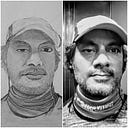A Moment of Pride!
By providence, I ended up meeting a family friend last weekend — COVID and lockdowns did not allow much meeting of friends over the last one and a half years — so the couple of hours that we could spend together were highly desired, anticipated and as expected, turned out very enriching.
As is wont, we ended up discussing the travails of bringing up teenage children and somehow we meandered into the topic of “Pride” month. My friend has been volunteering a lot of her time over the last decade or so at an NGO that focusses on suicide prevention. As one can imagine, this is a highly sensitive subject-area and hers is a heart wrenching job. Without a clear commitment to the purpose and mental acuity and maturity to meet the demands of such a role, one can easily burnout quickly — emotional bankruptcy must always be around the corner for such great souls who volunteer for such noble causes. My friend, thankfully, is exactly the kind of person who is suitable for such a job. Her intentions are genuine and her focus, authentic. Also, she is fearless, sensitive and mature.
Anecdotally, I understand that a lot of cases that this NGO ends up dealing with are gender related issues. Like most people I know, my exposure to this topic is very limited. So, I was and am grateful for what I ended up learning from this conversation.
Here is what I learnt:
What generally causes suicidal thoughts — strong and dominating feelings of self-perception such as:
“I’m hopeless”,
“I’m a failure”,
“I’m worthless”,
“I’m not good”,
“I’m not good enough”
Additionally, I understood that often society’s attitude to LGBTQIA+ (particularly the adolescents) generally tends to be: “you are the problem and you have to be fixed” etc
LGBTQIA+ or otherwise, given the increasingly individualized society that we are evolving into, this feeling of inadequacy (sometimes proliferated and magnified by social media platforms) is here to stay not just among youth but equally prevalent in adults too.
So, how does one deal with it — my friend spoke about the “Beyond the box” model.
Society creates a box and expects us to belong or behave within the boundaries of that box. Many of us do not have issue with this. But some of us just don’t or can’t belong within such a box. If you do not belong to the box but are successful (in career or wealth or status) then no problem — society accepts that (many times even celebrates that). But what about those who are outside the box and are not successful in a conventional sense. This is a difficult overlap section in this Venn diagram of ‘society’s box’ and ‘one’s personal disposition’ and ‘perception of success’. If one is able to create one’s own box with a clear idea of its boundaries — then that ground or box could become one’s refuge — one’s anchor in the face of experiences of discrimination (real or perceived), hypocrisy, mistreatment, failures and setbacks (real or perceived). It is a given that one will face this impingement on self-worth time and again. I think there is lot of value in helping individuals creating this psychological “refuge” while the society at large inches towards addressing this situation more structurally.
LGBTQIA+ community is among the most disadvantaged community in most societies and I’m glad we have started to recognize and celebrate PRIDE month. It brings forth visibility and instigates dialogue and thinking. I have seen a number of senior industry leaders declare solidarity with PRIDE month this year. I hope, next year, they start to relate relevant personal experiences including visibility into results of their efforts — this can serve as a catalyst to create safe spaces for those beyond the box — those who sit on the wide scope of spectrum.
Categories are artificial constructs to help us effectively and efficiently navigate life and world. Boxes form because we tend to think in categories — we should keep reminding ourselves that while categories are very useful heuristic constructs to help us navigate the infinitude of situations/information that life throws at us, it is equally important to be sensitive to the salient truth that everything and everyone is on a spectrum.
While the symbol of pride overtly reflects the range of colours in a “rainbow”, let us not forget that colours are artificially created ranges on the wavelength continuum of light — for light, after all, rests on a spectrum.
